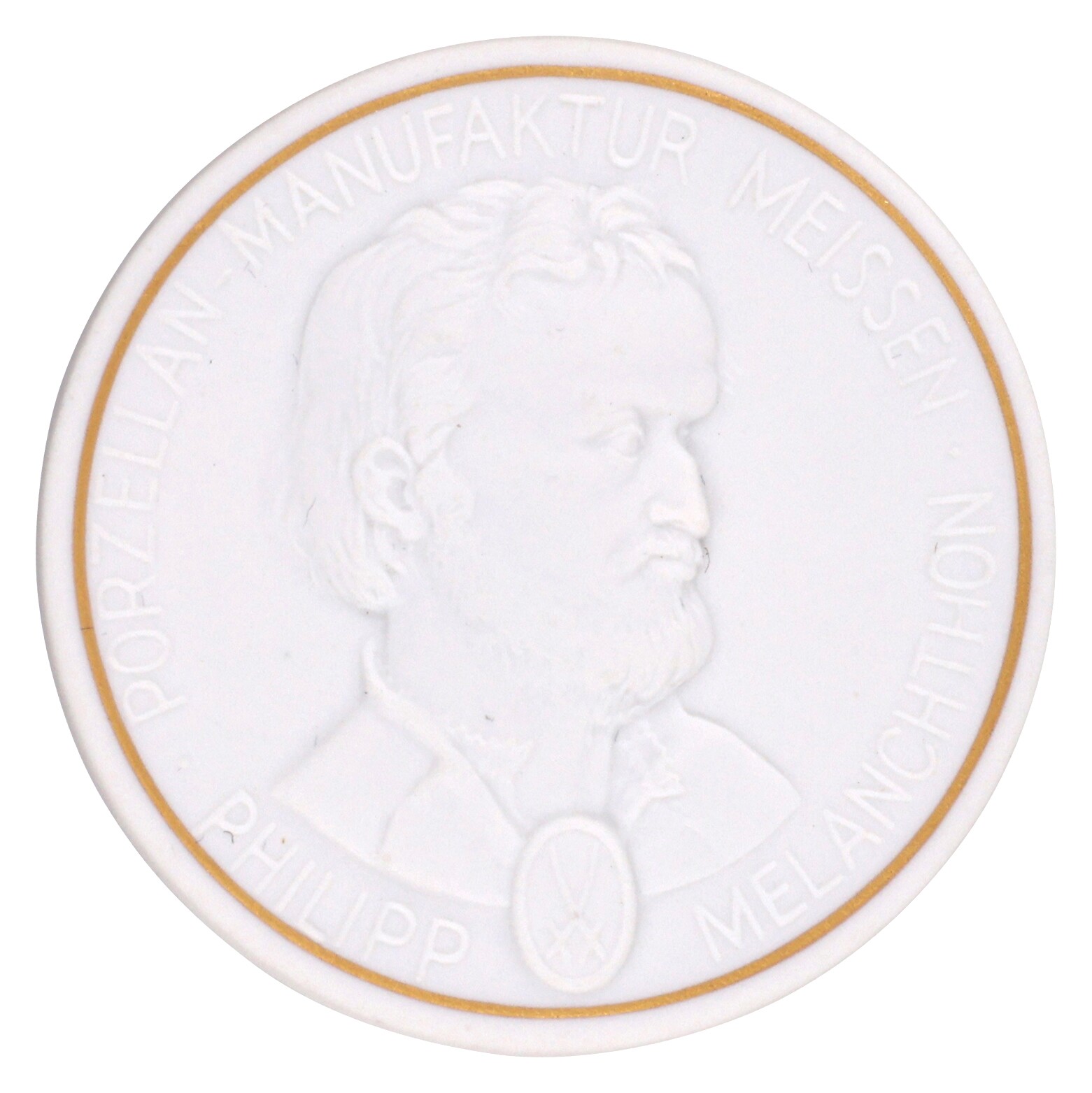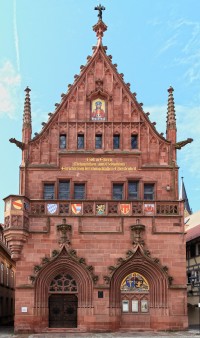Vorderseite: Brustbild Melanchthons barhäuptig nach halbrechts, darunter das Meißen-Signet (gekreuzte Schwerter) in oval
Umschrift: PORZELLANMANUFAKTUR MEISSEN PHILIPP MELANCHTHON
Rückseite: Zentriert im Feld zwischen den Jahreszahlen 19 – 97 gekreuzte Kurschwerter der Meißner Porzellanmanufaktur, darunter Meissen Thaler und Signatur B.
Umschrift: 500. GEBURTSTAG PHILIPP MELANCHTHON
Philipp Melanchthon (1497 – 1560), Humanist und Reformator
en

